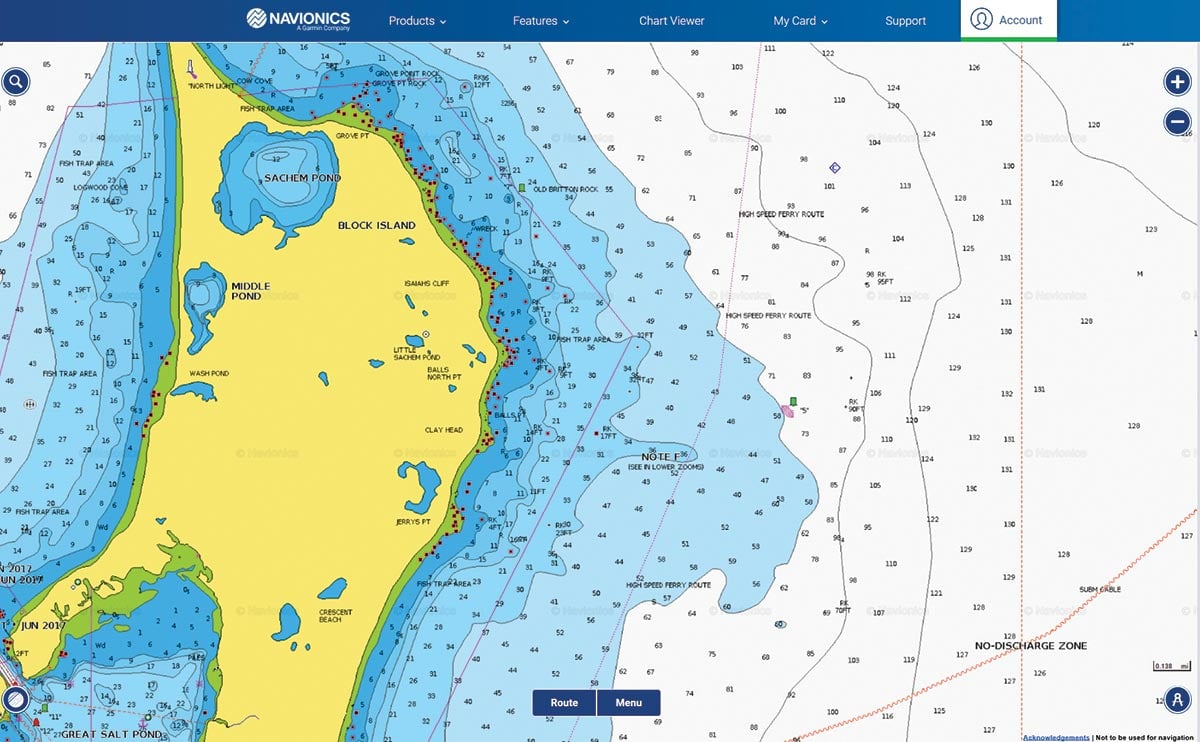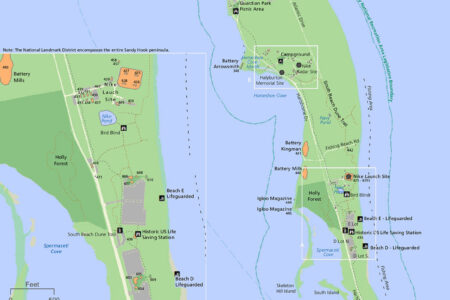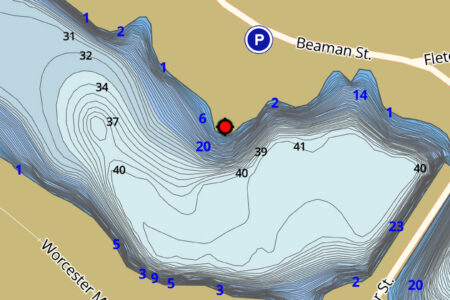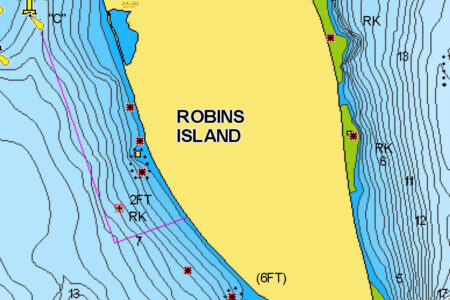
Located at the northeast corner of Block Island, Clay Head offers action from spring through fall on a variety of species.
The Clay Head area of Block Island is located on the Northeast corner of the island. It’s famous for its pronounced bluffs that display cliffs of sand topped with a bit of greenery. The immediate shoreline is rocky, and this rocky feature carries outward underwater in several spots. This can be a nice place to fish when you have a stiff southwest breeze as the island breaks the wind and gives you a little protection in its lee. Flood tides tend to run in at a northwesterly direction and the ebb tides run off to the southeast.
Early in the season from March through April there are several spots that have historically given up some cod. Look around the areas of 41-12-17.0/71-32-00.5 and 41-12-08.8/71-32-00.1. Most of the cod caught here are caught on clam baits, but it never hurts to try a diamond jig from time to time, especially if sand eels are present.
Mackerel can also be found in the Clay head area at times, usually in the spring. If you’re looking to jig up a few macks for bait or the dinner table try around 41-13-11.9/71-32.14.1. Mackerel tree rigs with a diamond jig as the weight are the ticket.
Trolling from 41-12-49.2/71-32-48.4 to 41-12-01.1/71-33-07.9 will give you a good shot at some bluefish and possibly a bass. Work the 28- to 38-foot depths with wire line on a flooding tide. When I worked the deck of some charter boats out of Point Judith we used to chum up bluefish here on the way back from the tuna grounds. Fishing chunks of butterfish on drail weights with hooks could sometimes produce some fast and furious action. There’s also a steep drop off around 41-12-20.3/71-31-53.8 (drifting to the east) that will often give up bluefish to diamond jigging in the late summer or fall. The bottom drops away from 50 to 55 feet to a quick 100-plus in a very short distance and speed jigging diamond jigs can be very effective.
We also have chummed bonito here from time to time in September. Anchoring up around 41-11-56.1/71-32-22.4 and setting up a slick of chunked butterfish into an ebbing tide would produce good action with bonito on light tackle. The trick here is that you’ve got to be able to evade the packs of dogfish that sometimes come into the island. It’s next to impossible to keep a bait in the water when they’re around.
Anglers looking for stripers can find fish here either casting plugs into shore, trolling, or fishing live eels. If you enjoy casting plugs, cast big plugs into the surf and rocks around Jerry’s Point and other small rocky points on the shore. If trolling or drifting eels work around the rocks out deeper around 41-12-09/71-33-05.
The area around Clay head can also offer some good fluke fishing at times. I’ve had the best success here later in the season as the fluke are starting to leave the sound. It’s almost as if they stop at Clay Head for a few days to feed before continuing their way past the island and out to deeper water. Look around the edges of the rocky ground, either at 41-12-56/71-32-27 or a little further to the south at 41-11-46/71-32-58.
If the weather is getting a little snotty at the Southwest Ledge or corner, you might give consideration to trying Clay Head to see if it offers a little protection. You might be able to save the day instead of packing it in.





